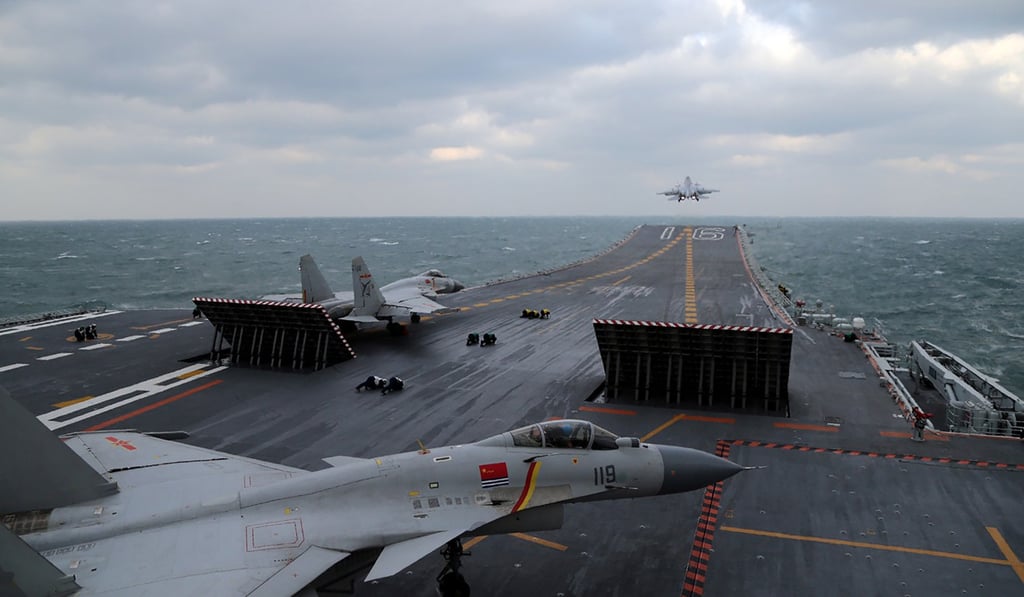What planes will be on board China’s second aircraft carrier, the Shandong?
- The first home-built Chinese carrier will deploy a range of aircraft from J-15 ‘Flying Shark’ fighter planes to anti-submarine ‘Sea Eagle’ helicopters

China’s first home-grown aircraft carrier, the Shandong, officially entered into service last week, making China one of only a handful of countries to have more than one carrier.
Although China lags well behind the US in terms of operational capability, the Shandong – together with its sister ship, the Liaoning – marks an important stepping stone in terms of naval development and could offer a platform for expeditionary missions abroad in future.
According to an article published by Naval and Merchant Ships, a publication issued by the Chinese Society of Naval Architects and Marine Engineers, the following aircraft are expected to be deployed on the warship.
J-15 fighter jet
The Shenyang J-15, also known as the Flying Shark, is a fourth generation, twin-jet, all-weather, carrier-based fighter jointly developed by Chinese navy’s 601 institute and Shenyang Aircraft Corporation.
It was developed from an earlier model, the J-11B, with elements taken from the Russian Sukhoi Su-33 air superiority fighter.
The J-15, with a maximum take-off weight of 33 tonnes, is the heaviest active carrier-based fighter jet in the world but the only one available to the PLA Navy.
